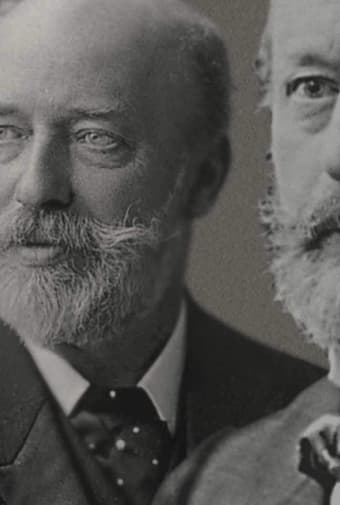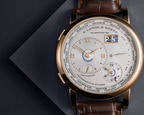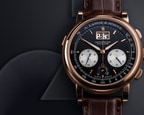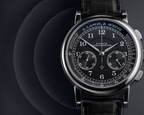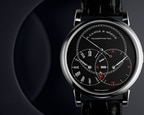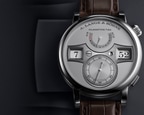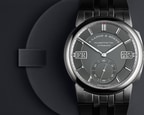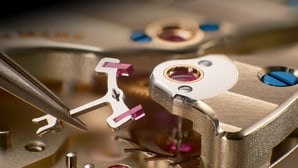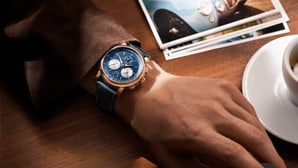In 1868 Ferdinand Adolph Lange’s son Richard officially becomes a partner in his father’s company, which then receives its current name: A. Lange & Söhne. In 1871 second son Emil joins his brother. In 1875, after their father’s death, the brothers take over the manufacture. Both complement each other perfectly: Richard Lange is an outstanding watch designer, both fascinated by and gifted in science – with his patents, he pushes precision in time measurement forward. Emil Lange, by contrast, is a fantastic salesman with an excellent feel for aesthetics – he knows just what makes contemporary watch lovers tick.
Valuable and world-famous – the pocket watches
Emil Lange is awarded the cross of the Knight of the French Legion of Honour for his services as a juror at the Paris world fair and the presentation of the “tourbillon of the century”. This “tourbillon of the century” attracts attention with its refined design. The carefully worked enamel miniature on the front of the gold case also takes Paris by storm – against a Paris backdrop, Minerva is shown as a symbol of the victory of peace in the world – thanks to progress, technology and craft.
The Sultan`s Watch
In 1898, Kaiser William II (1859–1941) gives the Sultan of the Ottoman Empire a stunningly decorated pocket watch as a gift on his first trip east. On the front of the case, the German monarch is depicted in an enamel portrait set with diamonds. The reverse shows an imperial crown and a ‘W’ set with diamonds. The bracket ring is supported by two leaping dolphins. The timepiece is also gilded and the balance cock is engraved by hand. The gold screws on the compensation balance and the gold pallet fork and gold escape wheel are typical for most Lange 1A grades. Emperor Wilhelm is willing to wait a long time, as the quality of this piece is to be unparalleled across the globe.
The gift of the “Fairy-tale king”
Ludwig II (1845–1886), King of Bavaria, loves opulent beauty – thanks to his Neuschwanstein Castle, he is the “fairy-tale king”. The castle will go on to draw millions of visitors almost 150 years later. Ludwig II also orders a timepiece for his favourite Wagner opera singer, Heinrich Vogel, from the Lange manufacture. The singer performs at the original performance of the opera Die Walküre around 1870 in the Munich Königlichen Hof- und Nationaltheater. The case of the pocket watch has five scenes from the opera in enamel on the individual covers. This piece is also of grade 1A and has a diamond endstone.
The GRANDE COMPLICATION No. 42500
Only one GRANDE COMPLICATION no. 42500 – ordered by Heinrich Schäfer in Vienna in 1902 – was ever built and sold. The name “GRANDE COMPLICATION” is more than apt. The model is the most complex piece that the company has ever created; the clock has a chiming movement with a grande and petite sonnerie, a minute repeater and a split-seconds chronograph with flying seconds (seconde foudroyante) and 60-minute counter. It also has a perpetual calendar with a moon-phase display. All this is concealed in a wonderfully chiselled and hand-engraved gold savonette case with classic Graff engraving. The German silver 1A-grade piece is driven by two barrels.
Observation watches and pocket chronometers
In the 19th century, pioneers of flight such as Ferdinand Graf von Zeppelin conquer the air with their designs, and geophysicist Erich von Drygalski sets sail on the first German expedition to the South Pole. Precise, easily readable watches are required for navigation and scientific measurements. Accordingly, A. Lange & Söhne develops its own timepieces for these purposes: the scientific pocket chronometer with fusée-and-chain mechanism and observation watches.
Richard Lange develops a new spring alloy
Richard Lange’s nephews Otto, Rudolf and Gerhard Lange now guide the company, as Richard himself is 84 years old. Richard Lange is still constantly developing new solutions for complex problems relating to watch mechanics. That is how, in 1930, when reading an article by two Siemens engineers, he comes upon the idea of improving the elasticity of the balance spring by including a small amount of beryllium. Richard Lange immediately files a patent: no. 529945 for a “metal alloy for watch springs”. Later, the Swiss watch technician Richard Straumann will market this discovery with the name “Nivarox® balance spring”. This spring is still used in most quality mechanical watches.
Explore further



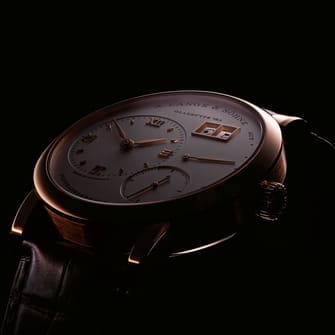
Exclusive insights into the world of fine watchmaking
Experience A. Lange & Söhne’s fascinating heritage, unique stories and exquisite timepieces by subscribing to our newsletter.
